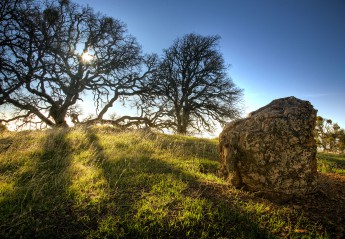Read Patrick McConvell’s chapter in Strings of Connectedness: Essays in Honour of Ian Keen (2015), edited by Peter Toner. The following is a selection from the chapter’s introduction:
Ian Keen has made significant contributions to the comparison of Australian Aboriginal societies, and specifically to the relationship between types of marriage, kinship systems and other aspects of society and economy. He has maintained a commitment to the rigorous study of kinship systems and to comparative anthropology, or ethnology, when these orientations became unpopular in sociocultural anthropology. One of his major works (2004) systematically compared representative groups throughout Australia, emphasising how aspects of social organisation linked to economies. On a smaller scale was his brilliant study of how the scale of polygyny differed in two neighbouring areas of Arnhem Land, seeking the explanation in matrilateral cousin marriage and networks, age structures and economy (1982).
In recent times he has also joined forces with linguistics in investigating the prehistoric development of these relationships of kinship, marriage and other aspects of social organisation, in the AustKin project (Dousset et al. 2010). One study looked at how asymmetrical cross-cousin marriage developed, with 13 Strings of Connectedness 288 crucial evidence supplied by the change in meaning of kinship terms. Notably the change in marriage type played a strong role in changing meanings of terms. The kinship terms in this case are inherited words within the Pama-Nyungan language family and its subgroups (McConvell and Keen 2011; Keen 2013b).
However, another striking phenomenon is the preponderance of affinal (in-law and spouse) terms among loanwords in kinship vocabulary. Consanguineal terms tend not to be borrowed widely unless they also function as affinal. Apart from affinal terms, kinship terms are rather rarely borrowed. Affinal terms, however, include some of the most long-distance travelling loanwords (Wanderwörter). Why is this so? One might readily guess that words related to marriage are among those that tend to be shared in wide areas since exogamous marriage between language groups is a most salient and frequently discussed topic. Further than this, though, it may be that these new words for spouses and in-laws were first introduced because they were key elements in new marriage practices that were diffusing. This opens a window on changes in the nature of societal and intersocietal alliance in the last few thousand years in the late Holocene in Australia.
